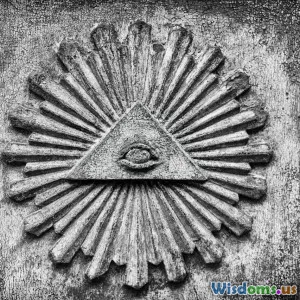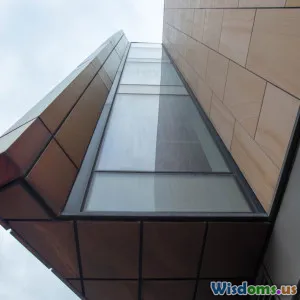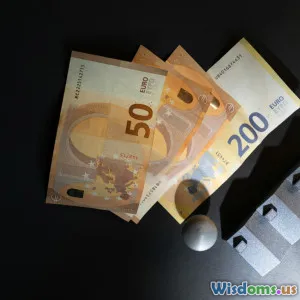
How to Spot Covert Symbolism in Revolutionary Group Flags
8 min read Uncover hidden meanings in revolutionary flags by learning how to spot covert symbolism through detailed analysis and powerful examples. (0 Reviews)
How to Spot Covert Symbolism in Revolutionary Group Flags
Flags are much more than pieces of fabric—they are powerful symbols conveying messages, identities, and even secret meanings. Revolutionary groups, in particular, have long used flags to communicate their ideals, goals, and cultural assertions. However, many flags contain covert symbolism, tucked away in shapes, colors, or arrangements that aren’t immediately obvious.
In this article, we explore the fascinating world of hidden meanings within revolutionary group flags. By learning how to interpret these concealed symbols, you gain deeper insight into the groups’ inner workings, their philosophies, and sometimes, their calls to action. This guide offers practical strategies for spotting covert symbolism, supported by historical and modern examples.
Understanding the Purpose of Covert Symbolism
Before diving into flag analysis, it's crucial to understand why revolutionary groups embed secret symbols in their banners.
Communicating Under Surveillance
Many revolutionary movements have operated under harsh surveillance or oppressive regimes. Covert symbols allowed them to communicate their beliefs and plans quietly, without drawing unwarranted attention. In some cases, these symbols only make sense to insiders, reinforcing group cohesion and identity.
Encoding Ideologies and Heritage
Flags often contain elements referencing historical events, cultural motifs, or myths integral to the revolutionary cause. Sometimes, this information is deliberately obscured to protect sacred knowledge or to ensure understanding only among dedicated followers.
Key Elements of Revolutionary Flags
To spot covert symbolism, one must first recognize the elements commonly used in revolutionary flags. These elements include:
Colors
Colors evoke emotions and symbolize abstract ideas. Red often represents revolution or sacrifice, black can signify mourning or resistance, while green may denote land or hope.
Example: The black, red, and green Pan-African flag symbolizes black liberation with hidden nods to African unity and resistance to colonial forces.
Shapes and Symbols
Geometric shapes, such as stars, crescents, or swords, carry layered meanings.
- Stars: Could represent guidance, ambition, or particular cultural references.
- Circles: Often symbolize unity or eternity.
- Weapons like daggers or swords: Highlight struggle or defense.
Arrangement and Proportion
Sometimes, the placement or angles among elements signify secret meanings, like the number of stars representing important historical dates or members.
Strategies to Decode Covert Symbolism
Unmasking hidden messages requires methodical approaches:
1. Historical Contextualization
Understanding the historical backdrop of a revolutionary group illuminates why certain symbols might be chosen.
Case Study: The flag of the Irish Republican Army incorporates a harp and colors linked to Irish nationalism and colonial resistance, referencing deep historical tensions.
2. Comparative Analysis
Comparing a group’s flag with national, religious, or cultural flags can reveal similarities or subversions.
Example: The Basque Ikurriña shares colors and design elements with religious iconography, hinting at cultural pride and defiance.
3. Symbol Cross-Referencing
Researching symbols in broader symbolic dictionaries or historical uses helps identify less obvious meanings.
Example: A simple triangle might denote change or hierarchy depending on the cultural lens.
4. Expert Insights and Insider Testimonies
Works by historians, sociologists, and even former members can clarify obscure symbols. Recorded interviews or memoirs often explain flag meanings.
Real-World Examples of Covert Symbolism in Revolutionary Flags
The Viet Cong Flag
The black and red flag of the Việt Cộng embodies dual meanings. Red stands for revolution and sacrifice, while black symbolizes the underground nature of the Viet Cong’s tactics. The subtle two-tone divide embodies the David versus Goliath struggle against a superior military power.
The Zapatista Army of National Liberation (EZLN) Flag
The EZLN flag reinvents traditional Mexican symbols to express indigenous resistance, featuring a red star on black. The star's five points subtly refer to the five principles of their movement. The nuance is in the black background denoting mourning but also invisibility — an intentional concealment reflecting their preference for anonymity against powerful adversaries.
The Algerian National Liberation Front (FLN)
Incorporating Arabic calligraphy, the FLN flag integrates hidden text with symbolic colors, resonating with Islamic traditions and Algerian cultural identity. The crescent isn’t just religious but also evokes hopes for rebirth and renewal.
Psychological Impact and Strategic Utility of Hidden Symbols
Covert symbolism serves psychological as well as practical functions:
- Fostering Unity: Shared secret symbols build a sense of elite belonging, reinforcing commitment.
- Confusing Opponents: The obscurity can mislead governments or opposing forces, delaying their understanding.
- Safety: Hidden symbolism allows supporters to recognize each other discreetly in hostile environments.
Tools and Resources to Decode Revolutionary Flags
For enthusiasts, historians, or researchers eager to analyze revolutionary flags more deeply:
- Symbol Dictionaries: Books like "Symbols Around Us" or databases covering political and cultural iconography.
- Flag Registries and Research Groups: Organizations such as the Flag Institute or vexillology associations offer extensive archives.
- Historical Texts and Memoirs: Primary source writings can unveil original intentions behind flag designs.
- Digital Image Analysis: Software tools can highlight unusual geometric patterns or color codes.
Conclusion
Revolutionary flags are layered repositories of culture, ideology, and secret messaging. Spotting covert symbolism demands patience, contextual knowledge, and analytical skill but rewards you with a nuanced understanding of these often clandestine movements. When you look at a revolutionary flag now, you can see not just fabric but a complex language of symbols—each stitch potentially telling a story of resistance, hope, and identity.
Mastering this interpretive skill connects you with history’s untold narratives, revealing how revolutions communicate beyond words.
References:
- Smith, Whitney. "Flags Through the Ages and Across the World." McGraw-Hill Education, 1975.
- Lewis, Mark. "Symbolism in Political Movements." Journal of Cultural Studies, 2010.
- Brandt, Klaus. "The Visible and the Hidden: Flag Symbols and Their Meanings." Flag Research Quarterly, 2018.
Feel encouraged to explore local histories and political symbolism further, as each revolutionary flag carries the heartbeat of its people concealed in plain view. Happy decoding!
Rate the Post
User Reviews
Other posts in Political Secret Societies
Popular Posts


















